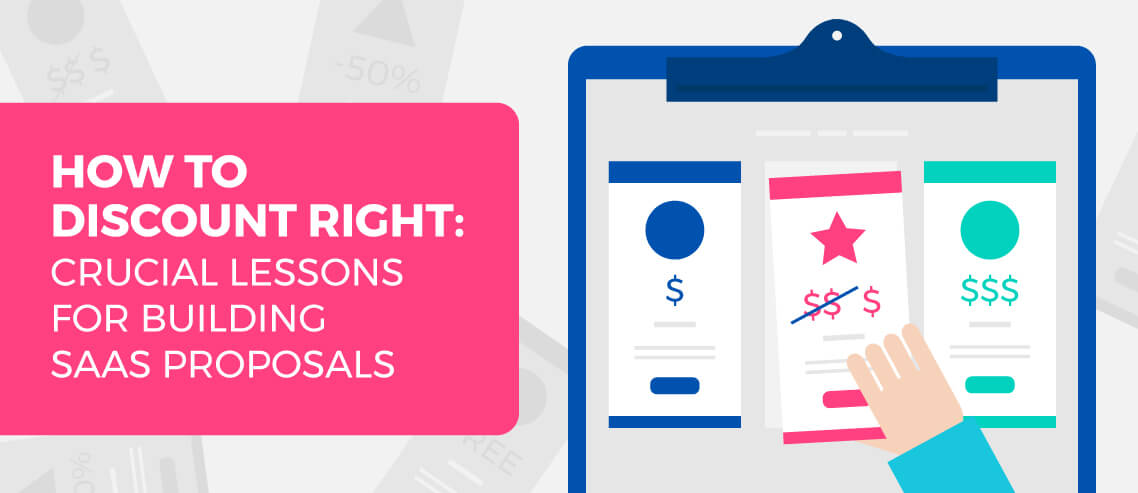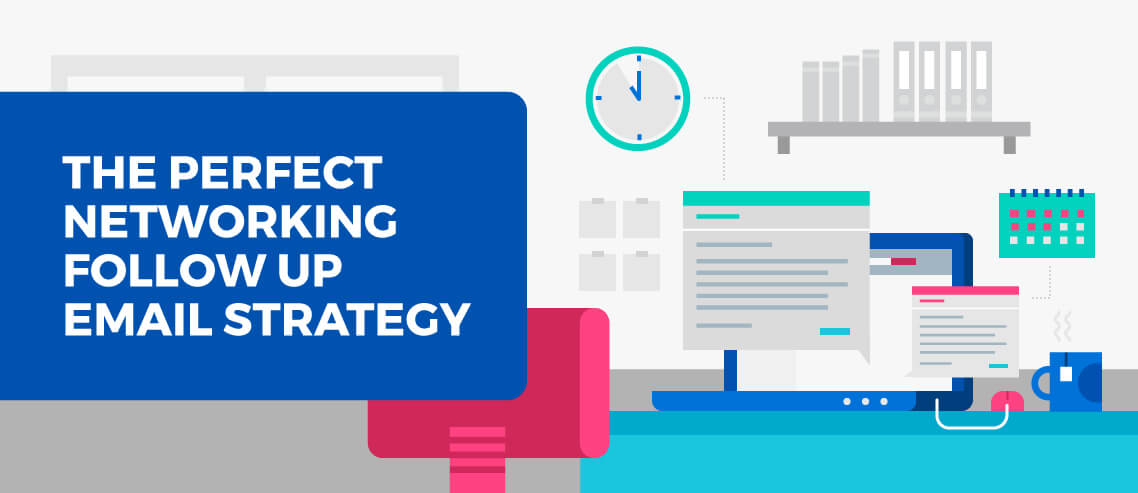How To Discount Right: Crucial Lessons For Building SaaS Proposals

Contents
Imagine this:
You are shopping for a new family car. After months of research, you have zeroed in on a model, taken a test drive and fallen in love.
But there’s a hitch: The price tag is making you queasy. You have the cash, but as much as you love the car, you just can’t pull the trigger.
Now imagine that the sales rep offers you a deep discount—and suddenly the price works for you. Of course, it does. Why would you shell out extra cash—or walk away from something you really want—when you can get it at a discounted price?
There’s a reason for that: Years of conditioning has made us believe that we should wait to buy until there’s a discount. Statistics support this statement—a survey conducted by RetailMeNot reveals that discounts have a substantial influence on customer acquisition, brand loyalty and brand perception among consumers.
“Today’s consumers want to feel as if they have spent their money in the smartest way possible, and to do so, they leverage deals throughout the shopping journey, including when deciding where to shop and what to buy,” says Marissa Tarleton, chief marketing officer at RetailMeNot.
But here’s the thing: Discounts work differently from the seller’s perspective. And if businesses aren’t careful with discounts—if they don’t strategize correctly—the whole thing can backfire in a big way.
Here are 5 key lessons that companies can use to implement pricing and discount strategies that work. While most of these examples pertain to SaaS companies, they can be applied to other industries too.
So without further ado, let’s get started.
Lesson 1: Understand The Timing Of Cash Inflows & Cash Outflows From Commission
Companies at any stage should consider offering discounts to their customers—but not without knowing their own profit margins.
Discounts can kill a company’s cash flow if they are offered in silos, without taking into account sales commissions and data from the finance team.
But how do you determine the ideal discount percentage? It’s a tricky question but thankfully one you can do a little math to answer.
Tomasz Tunguz, Venture Capitalist at Redpoint, shares a helpful graph while talking about the risks that discounts pose to startups.
In the graph below, Tunguz compares three discount models:
- 25% off monthly payments
- 25% off upfront annual payment
- First three months free

Both the 25% off monthly and three months free options result in the company facing a cash challenge if the commission is paid within the first 3–6 months, with the 25% off monthly option putting the company at greatest risk.
As you can see, the best approach for the business is to offer 25% off up front.
In Tunguz’s own words:
“Each of these options costs customers the same total amount over the course of 12 months. But, the cash position of the business is quite different for each because there is a difference in the timing of when commissions are paid (cash out) and when customers pay (cash in), which can cause a cash squeeze.”
Key Takeaway: Designing a sweet deal for your customers is a smart tactic—it’s an instant winner with buyers and can get you out of a slump. But discounting can hurt your business if you don’t carefully examine at the timing of cash inflows and outflows.
Lesson 2: Discounts Don’t Have To Last Forever
Discounts shouldn’t last forever. Period.
Before I share why this is a bad idea, let’s talk about product quality and pricing.
Now, I’m sure you’ll agree with me here: Name-brand products from flashy, expensive stores are often considered high-quality, and rarely are they discounted. The logic is simple: The attention to detail justifies the price tag.
As customers, we don’t expect to get a discount when buying from Calvin Klein, Gucci or even Nike. Yes, we line up outside the store when a sale happens, but the point is that we’d definitely question the quality of those products if they were on sale 365 days a year.
The reason is simple: Discounted products are often considered low-quality.
Discounts do not impact B2C products as much as B2B—for B2B companies, continuous discounts can be crippling. They can impact your P&L and significantly devalue your product.
This is especially true for companies that sell software, including early-stage startups that are building their initial client base. Conversations about discounts are inevitable at this stage, explains Bob Lempke, ex-VP of sales at Chartio.
In the Bowery Capital podcast, he explained how important it is to have upfront conversations with clients who request discounts about the value of your service being built into the typical price:
“There should be some discussion along the way that if we help you grow, you add licenses—you’re going to pay like everyone else. A discussion needs to be had around the point in which we EARN the ability to send you a bill or a bill that is realistic to the value we delivered.”
Key Takeaway: While it’s smart to reward new customers for taking a risk on your solution, it’s important not to devalue your product by offering permanent discounts.
Lesson 3: Percentages Are Hard For People To Understand
Let’s say you’re out getting your favorite coffee. There’s a special promotion, and you have a choice: You can either get 33% more coffee for the same price, or take 33% off the price.
What would you do?
Akshay Rao and a team of researchers at the University of Minnesota’s Carlson School of Management asked the same question to his students. The vast majority of them viewed both options as equal, even though the discount by far is the better proposition.
Rao and his team deduced that most people have a really hard time understanding fractions.

In other words, customers prefer getting something extra to getting something cheap.
Retail businesses often see bonus deals valued more than discounts of the same value.
For SaaS businesses, this is a great tactic to incorporate in sales proposals—offer the first or second month free instead of using percentages.
Key Takeaway: Percentages can baffle even the best of negotiators. If you are looking for quick wins, it’s best to offer value deals rather than discounts.
Lesson 4: Hook Your User Early On
Macbooks aren’t cheap—a Macbook ranges anywhere from $1,500–$1,800 and up, depending on the make.
But here’s the twist: Despite the exorbitant pricing, Apple is a popular brand among college students—students who work multiple shifts to pay off hefty private education loans and other bills.
Could they settle for something more affordable than a Mac? Sure they could—there are plenty of other laptops out there. But students still choose this brand over the rest.
The question is: How does Apple get these cash-strapped students on board?
The company offers education pricing to hook students—who then remain loyal to the brand after they graduate.

With tons of financing options and attractive discounts, the deal is hard to ignore.
When a company is generous to its users early on, they are not only building a tribe of future buyers but also employing the rule of reciprocation—giving something to someone who then feels compelled to give back.
In this case, customers either continue using the product even after the initial offer has expired or upgraded to other models. Rarely do you come across a person who’s made the switch from a Mac to a PC.
This is a significant insight into pricing psychology. How can brands make it work?
Some ideas: Include a free unique gift with a purchase, throw in a sample product, offer a free consultation.
SaaS companies can offer special prices to attract startups before they become unicorns. Drift.com is one company embracing this approach—its Drift for startups program offers early-stage companies 93% off the original price!
Key Takeaway: Hooking your customers early on can pay off big later. But the most important lesson here is to focus on the value of the product and offer potential buyers a taste of how it will make their lives better. While discounts can work, this strategy will ensure that buyers keep coming back for more.
Lesson 5: Keep Your Enterprise Discounts Private
A lot of people are willing to pay full price, so it’s important to know when you should and shouldn’t promote discounts. Geoffery James, the author of How To Say It: Business to Business Selling, explains:
“Product discounts can create delays and lost sales if presented to customers at the wrong time and in the wrong way.”
When it comes to B2B enterprise sales, it’s very common to have discounted rates. Lincoln Murphy talks about this in his post How-to Use SaaS Pricing Discounts to Grow Revenue:
“Discounting is generally done behind-the-scenes, one-off for each client, under NDA, etc. and therefore doesn’t have the same negative effect as plastering huge discounts all over your marketing site might have.”
So how can you effectively communicate discounts to enterprise customers? Here are a few options:
- Personalize the deal—hop on a video call and talk to them.
- Meet them in person—explain the value of the product and the discount that comes with.
Most important: After you’ve promised a discount, stick to your words and honor the deal.
Wrapping It Up
Businesses are evolving every day, and so are the tricks that can help you acquire customers. Discounts are one of the oldest, most effective selling tools; that being said, a discount isn’t just an easy-win tactic, but something you need to employ strategically based on the needs of today’s decision-makers.
We hope that the above lessons help you use discounts effectively and increase your sales.





